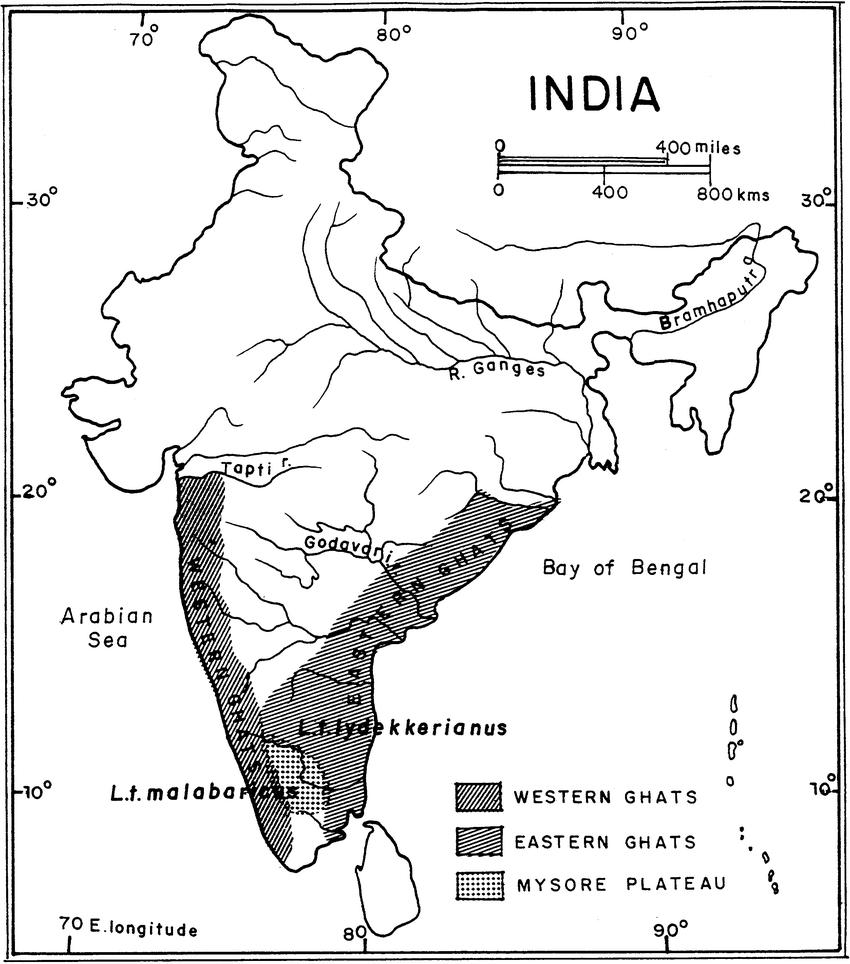Biodiversity & Environment
Climate Change and The Eastern Ghats
- 09 Mar 2020
- 7 min read
This article is based on "A browning east: on climate change and the Eastern Ghats" which was published in The Hindu on February 28, 2020. It talks about the importance of the Eastern Ghats while describing the impact of climate change on the region.
Spread across some 75,000 sq. km. from Odisha to southern Tamil Nadu, Eastern Ghats play an important dual role in fostering biodiversity and storing energy in trees. The Eastern Ghats consist of different eco-regions with its range from south to north along the east coast of India. The important eco-regions consist of Eastern Highlands moist deciduous forests, East Deccan dry evergreen forests, Deccan thorn scrub forests, shrublands, and South Deccan Plateau dry deciduous forests. This diverse landscape is home to endemic flora and fauna. Many animals, including tigers and elephants, and some 400 bird species are found in these discontinuous forests that receive an annual average rainfall of 1,200 mm to 1,500 mm. The Eastern Ghats is considered to be a part of India’s natural heritage. The broken hill-ranges of the Eastern Ghats spread across Odisha, Telangana, Andhra Pradesh, Karnataka, and Tamil Nadu, are home to unique ecosystems.
The Eastern Ghats face a serious threat from climate change. The area has shrunk by 16% over the past century, and just one region, Papikonda National Park, lost about 650 sq. km. over the last twenty years.
Concerns Associated with Climate Change
- Loss of Livelihood: Diminished rainfall can negatively affect the productivity of these forests, in terms of their ability to store carbon, and provide subsistence material. The local forest communities are always dependent on forest produce and other forest resources for sustaining their livelihoods, so if forest productivity is affected by climate change then this will directly have an impact on the well-being of the local communities.
- Loss of Biodiversity: a rise in seasonal temperature, causes reduced plant species diversity and provides a dominant role for herbs over trees.
Eastern Ghats - Challenges Today
- Tremendous stress, degradation and damage due to human greed, population pressure, unsustainable development, apathy by public, negligence by public servants, etc.
- Haphazard mining, logging, poaching, forest fires, unsustainable harvest of forest produce, pilferage of rare species, smuggling and export of rare flora and fauna, encroachments of forest land and infrastructure development industrialization, springing up of habitations with an intention to colonize and devour the forest.
- Though Eastern Ghats is a rich and diverse eco-geographic unit, it has not caught the attention for conservation and to be protected as a prominent eco-geographic unit. For ages the hill ranges have not been viewed as one entity since they are dissected by river gaps, wetland and planes.
Degrading Forest Cover and Paris Agreement
- Such large scale destruction of forest and tree cover goes against India’s commitments to the Paris Agreement on Climate Change; under which India committed to create an additional carbon sink of 2.5 to 3 billion tones through enhanced forest and tree cover.
- While the commitment is to increase forest cover through Afforestation forest cover in the Eastern Ghats is being reduced at an alarming rate mainly due to anthropogenic stress, rapid and unsustainable economic development.
Preserving the Eastern Ghats: Steps To Be Taken
- Promotion of sustainable use of forest resources should be done in order to counter overexploitation.
- Government should incentivize settled agriculture in order to counter the impact of shifting agriculture because the practice of shifting agriculture will directly contribute to deforestation.
- Improving tree cover nationally can confer multiple benefits, including modulation of the monsoon, improved air quality and wider spaces for biodiversity to persist.
- Government should finance the usage of indigenous plants and trees for restoring and strengthening the peripheral areas of the forest of Eastern Ghats by tapping into the International Climate Fund available.
Conclusion
- Measures should be taken to protect endemism, rarity, endangered species; species which are or may become threatened with extinction and centres of the evolution of domesticated species, are critical for maintaining the range and pace of evolution and speciation.
- Conservation of their eco-systems like wildlife Corridors, specialised ecosystems, and special breeding site/area, areas with intrinsically low resilience, sacred groves and frontier forests etc. is also very important. Geomorphological conditions which are known to have substantial effect on eco-systems at large include uninhabited islands in the sea, steep slopes, origins or rivers which are also to be conserved.
- There is a need for concerted and macro-level conservation movement by the involvement of all stakeholders especially the public. Collectivizing or binding all individuals and civil society groups into a network will bring much focus and strength to the cause.
| Mains Question: Explain the significance of the Eastern Ghats for India. Suggest steps that can be taken to conserve the biodiversity of the region. |





